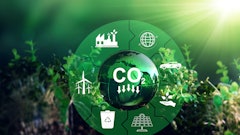
As the world faces pressing challenges in food security and environmental sustainability, the need for innovative solutions has never been greater. Controlled environment agriculture (CEA) offers a promising avenue for sustainable food production, allowing farmers to grow crops year-round in precisely managed conditions. However, the energy demands of indoor farming can be substantial, leading to increased greenhouse gas emissions and environmental strain. Over the past several years, CEA has proven to be more efficient at growing crops indoors than traditional farming operations; however, many have also proven that profitability is seldom achieved due to high energy and labor costs. Fortunately, there are strategies available to address these costs and mitigate issues.
The energy conundrum in CEA
CEA encompasses a range of techniques, including hydroponics, aquaponics and vertical farming, that enable the cultivation of crops in optimized environments. While CEA systems offer advantages such as reduced water usage, increased crop yields and protection against extreme weather conditions, they are power-intensive operations. The energy required for lighting, temperature control, ventilation and irrigation can significantly contribute to operational costs and environmental impact. Solving this problem can be a daunting journey that many companies struggle to start.
By following a Path To Smarter Energy (PTSE), companies can get a step-by-step customized solution to integrate energy solutions and renewable energy options into indoor growing environments that align with an organization’s goals. These goals often focus on energy cost reduction, power resilience and/or increasing sustainability efforts.
This four-step approach to Path To Smarter Energy consists of the following:
1. Knowing where you are using energy and how much.
2. Driving energy conservation in facilities to remove waste and drive down energy usage per source.
3. Beginning to generate clean energy or purchasing it from a provider.
4. Incorporating energy storage to move toward energy independence for key processes and equipment.
Understanding where energy is consumed
Understanding where your energy is being used, down to the source, can be difficult without metering equipment. By adding metering to gas and electrical infrastructure, you will start to learn what machines or processes are driving excessive energy usage. With this information at hand, business owners can make intelligent decisions on how to address this through steps such as upgrading equipment (lighting, HVAC systems, etc.), or changing a process, procedure or time of use to reduce energy, and therefore costs. In CEA, we see the amount of automation and energy being used increasing across the different growing platforms, be it a glass greenhouse or a sunless vertical building, so understanding how and where energy is being used is an important first step to controlling usage.
Automation and data collection can be a game changer
Automation can significantly enhance any business by integrating advanced data collection techniques. Adding automated sensors to your HVAC, lighting and irrigation systems allows real-time data to be captured and analyzed. Historical data can also be analyzed to detect anomalies or be proactive on preventative maintenance. The integration of metering and automation can empower growers with actionable insights and promote carbon reduction through sustainable and resilient agriculture practices.
Creating sustainable energy
As reported by Science Direct, incorporating energy efficiency into CEA is an important component to future success. As all farmers know, one of the most readily available and abundant sources of renewable energy is the sun. Solar energy has the potential to power CEA facilities efficiently and sustainably. By installing solar panels on buildings or adjacent land, indoor farms can tap into clean, renewable energy to meet a portion of their electricity needs. Photovoltaic (PV) systems convert sunlight into electricity, which can be used to power lighting systems, fans, pumps and climate control devices. Depending on the location, wind power can also be a viable option. Wind turbines harness the kinetic energy from moving air to produce electricity. The energy assessments completed in step one and the conservation tactics in step two assist with solar and wind systems planning and assessment. Energy assessments allow you to know what areas renewable energy should power, while energy conservation helps reduce the energy draw to ensure the renewables can power as much of the facility as possible.
Energy storage solutions
Renewable energy sources are inherently intermittent, fluctuating based on weather conditions and time of day. To ensure a stable and consistent power supply for CEA operations, energy storage solutions such as batteries or thermal water tanks can play a crucial role. Excess energy generated during peak sunlight or windy periods can be stored and used when energy production is low. If electric heat pumps are used, excess heat produced from the process can be used to heat stored water, which can later be used for heating at night, which is particularly effective with greenhouses. Either approach ensures a consistent power supply to maintain optimal growing conditions.
Economic and environmental benefits
Integrating a renewable energy solution into indoor growing offers multiple benefits, both economically and environmentally. By reducing reliance on conventional energy sources, indoor farms can significantly reduce operating costs over time. Additionally, the integration of renewable energy and energy storage contributes to a reduced carbon footprint, making a positive impact on the global fight against climate change.
Supporting successful CEA
As the demand for sustainable food production continues to rise, CEA presents a promising solution. By harnessing the power of renewable energy sources such as solar and wind, indoor growers can not only meet their energy needs with less financial impact, they can also operate in an environmentally friendly manner. The integration of metering systems and data collection, along with renewable energy and energy storage solutions, can usher in a new era of efficient, eco-friendly indoor growing. As technology and innovation continue to advance, the marriage of renewable energy and CEA holds the key to a greener, more sustainable and profitable future for this growing market.















